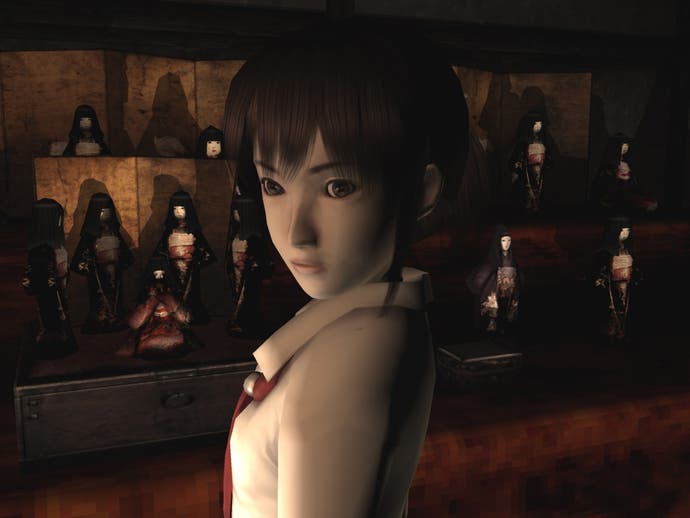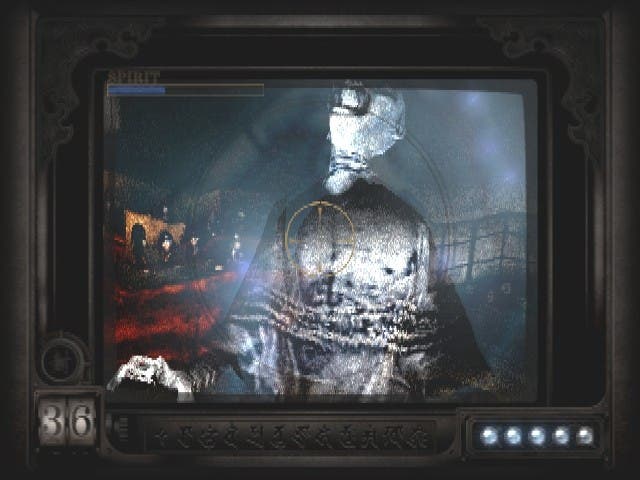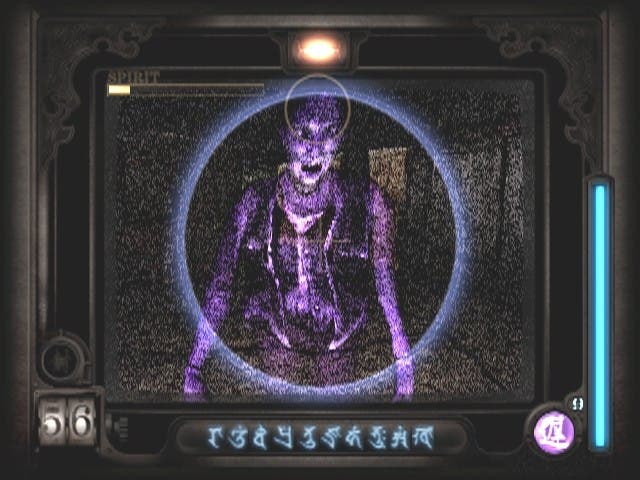Project Zero
Review - for homework this weekend, we scared ourselves senseless with Tecmo's superb foray into the survival horror genre
Think "Tecmo" and what comes to mind? Own up, I know exactly what you thought; you thought "boobies", and you were quite right. Tecmo will forever be known for their pneumatic fighting series Dead or Alive and little else, and it's a myth they seem only too keen to perpetuate with their forthcoming contender for most gratuitous game of all time, Dead or Alive Xtreme Beach Volleyball. And if you're struggling to think of what else they've made, it's hardly a surprise - but their latest release, arriving via French publisher Wanadoo, shows that this is a team that knows how to thrill in more ways than one.

Icy fingers down your back
Project Zero doesn't exactly arrive burdened down with expectations. Wanadoo is fairly new to this whole game publishing lark, Tecmo aren't exactly veterans of survival horror, and most tellingly of all - we thought - the game carries a budget price point, retailing at an RRP of £29.99 (but available for as little as £20 if you shop around). The signs were not good; the signs couldn't have been more wrong. Far from being budget-priced tat, this is one of the most intelligent, terrifying and downright superb games the PS2 has yet seen.
The basic plot of Project Zero is simple, if a little bizarre. In the prologue section of the game - which is entirely played in a strange black and white film effect, with washed out sepia and grey tones the order of the day - you play an effeminate young chap called Mafuyu Hinasaki, who has followed a benefactor of his, a famous mystery novelist, to a long-deserted mansion in the Japanese countryside. The novelist and his two assistants went there and disappeared, and Mafuyu is off to see if he can find them. He apparently doesn't get very far though, and after some nasty scares, an ghostly Japanese priestess attacks him and the prologue comes to an abrupt halt.

Japanese schoolgirl in day-saving shocker. Maybe.
The focus then changes to Mafuyu's younger sister, Miku, who follows in her brother's ill-conceived footsteps. Is anyone starting to see a pattern here? Miku is a far more likely candidate for being a videogame protagonist anyway, being a late-teens Japanese girl in a leather miniskirt and high leather boots - this game is from the people who brought you Dead or Alive, after all! There are no high kicking antics here, though; aside from her wits (well, your wits to be precise), Miku's sole method of self-defence against evil spirits is an old camera left to her by her mother, which Mafuyu dropped in the entrance hall of the mansion when he was attacked in the prologue. The camera can see things which aren't visible to the naked eye, while taking pictures of aggressive ghosts damages them - combined with Miku's ability to sense the supernatural when it's near her, this is basically all that lies between you and a particularly grisly death.
Hang on - evil spirits, aggressive ghosts and grisly death? I'm getting ahead of myself a bit. First, a word about the graphics - which are, quite frankly, superb. Everything in the game is real-time, with not a touch of FMV in sight - but rather than the crisp, clean edges we're used to in videogames, Tecmo have used the unusual graphics hardware of the PS2 to generate "noise" effects on the screen. These range from fully-blown "aged film" effects, complete with vertical black lines moving across the screen, to simple film-style speckling and noise in some places. The clever combined use of these effects, along with the highly detailed and expressive character models and utterly creepy surroundings, make for a very cinematic experience indeed. The camera positioning is also excellent in places, using horror film tricks to add to a sense of unease. You are being watched...

Ring, Ring...
Unease is a sensation you'll get used to when playing Project Zero. Shock, disgust, fright and the feeling of your flesh crawling are also sensations which will become second nature. This is a survival horror game unlike any other survival horror game; the only sensible comparison we can draw is with the original Silent Hill, which utilised similar camera and movement systems, and also used a torch in the character's hand as its main source of illumination, as Project Zero does. However, both Silent Hill and the granddaddy of survival horror, Resident Evil, take their inspiration from American horror movies; Silent Hill from the freakish horror of David Cronenberg and his ilk, Resident Evil from the shambling zombie B-movies of George Romero.
Project Zero stays close to home for its inspiration, tapping into the rich seam of gory and unpleasant Japanese folklore tales which spawned such cerebral excursions into terror as the Ring series of movies. In fact, Ring (and its sequels, Ring 2 and Ring 0) are the films which Project Zero most reminded us of; with several very obvious homages to the movies in the game. The hideous apparitions, written clues, pieces of diary and research paper and tape cassettes you find gradually add up to a fully coherent back story of immense cruelty and evil which is in itself more shocking and unpleasant than any of the foes you'll face in the game - this isn't a game which you'll forget once you finish it, but one whose story may well come back to haunt your dreams for years.

Riddle me this, riddle me that
The single biggest puzzle, of course, is the question of what happened at the creepy, abandoned Himura mansion, which is the setting for the entire game. Although the mansion is huge, you'll be running around bits of it over and over again as you attempt to piece together the mysteries of the past and find your lost brother. It never becomes boring, however, as pathways through the mansion change, doors mysteriously lock and unlock and new items appear as you play. While some of the puzzles in the game are fiendish, they are all logical and it's generally obvious what exactly you need to be doing, even if you're not always sure how to accomplish it. Unlike Resident Evil titles, which occasionally frustrate players utterly with illogical puzzles (why on earth would I need an eagle crest to get into the bathroom, for god's sake!) or Silent Hill, which sometimes went so far out of its way to be creepy and weird that it lost the plot entirely, Project Zero stays focused and everything makes sense - even if sometimes, it's not a kind of sense you particularly want to think about.
Compelling and utterly addictive, this is a game which drags you into its web and won't let you go until you've finished it. It's intelligent, scary and unsettling, providing a fresh and unexplored angle to the survival horror genre in a highly polished and slickly presented package. We did encounter one show-stopping bug near the start of the game, where something messed up and doors which should have opened failed to do so and we had to restart, but a lack of complaints or comments online suggests that we were just very unlucky. Overall, this is a game which you simply must buy if you're a fan of survival horror, or of the Ring movies, or of horror in general; and it's one which deserves pride of place in your collection even if you're just a gamer looking for something a bit different. It's no stretch of the truth to call this one of the best games on the PS2, and probably the best game released in several months. While Tecmo is unlikely to stop being a by-word for boobies, it'll now also bear overtones of the very best in spine-chilling horror.


